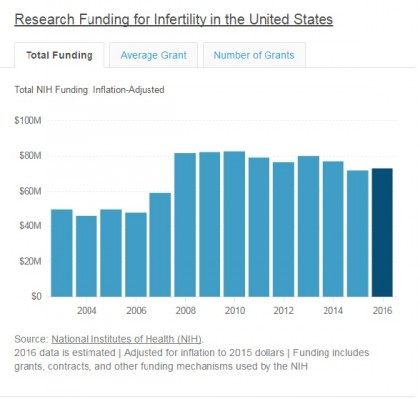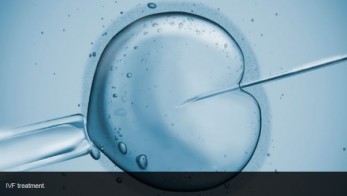Mini-IVF arba "minimali stimuliacija pagalbiniam apvaisinimui", taip pat vadinama "švelni stimuliacija IVF". Tai yra tokia pati pagalbinio apvaisinimo procedūra, tačiau moters stimuliacijai naudojami nehormoniniai vaistai arba maža vaistų dozė. Mini IVF yra gera alternatyva kaikurioms moterims, kurios gali geriau reaguoti į sumažintas vaistų dozes, ko pasekoje kiaušialąsčių ir embrionų kokybė būna net geresnė. Naudojant Mini-IVF klinikinis nėštumų dažnis yra toks pat, o pacientėms nekyla kiaušidžių hiperstimuliacijos rizika.
IVF procedūrai moterys privalo naudoti dideles dozes hormoninių vaistų, daryti kasdien injekcijas, o mini IVF nereikalauja tiek injekcijų, dažnai yra naudojamos tabletes. Kadangi yra vartojama mažiau vaistų, atitinkamai gydymo kaina yra mažesnė, todėl mini IVF gali būti daugiau prieinamas.
Tuo tarpu Mini IVF kritikai sako, kad tai nėra stebuklas ir visgi geriausi rezultatai būna taikant tradicinį IVF, o didelės vaistų dozės užtikrina, kad gausime daugiau kiaušialąsčių, sako Dr. Peter Ahlering.
Daugiau skaityti galite žemiau straipsnyje:
Mini-IVF: The next breakthrough in fertility treatments?
For three years, Saralda Ortiz-Howard and her husband tried to get pregnant until they decided to turn to fertility treatments. They spent more than $30,000 on multiple cycles of both intrauterine insemination (IUI) and in vitro fertilization(IVF) but neither was successful, not to mention that the physical side effects of the treatments were harsh.
“The amount of medicines that I was taking, my body felt out of whack,” Ortiz-Howard, now 43, said. “I felt that was one of the reasons I wasn’t successful in achieving pregnancy.”
Then the Hicksville, New York woman learned about mini-IVF, an alternative to traditional IVF that has been in use for years but isn’t as widely known or administered. Her physician, Dr. Zaher Merhi, director of research and development in IVF technologies at New Hope Fertility Center in New York City, explained that since mini-IVF uses a smaller amount of medication it would be less taxing on her body.
In June, Ortiz-Howard started mini-IVF treatments and said immediately she noticed her body wasn’t as swollen and she didn’t have the severe night sweats that she had experienced with IVF.
“With the low dose, I felt regular, I felt normal,” she said. “Everything felt so much better.”

Mini-IVF has drawbacks
Critics say that mini-IVF is not the magic bullet proponents claim it is. For starters, IVF is the most successful fertility treatment because the medications are meant to yield a large amount of eggs, said Dr. Peter Ahlering, medical director of the Missouri Center for Reproductive Medicine in St. Louis.
Studies show that after female age, the greatest predictor of pregnancy and live birth from IVF is the number of embryos produced.
“In general in IVF, quality and quantity run in parallel,” said Dr. Norbert Gleicher, founder and medical director of the Center for Human Reproduction in New York City.
Mini-IVF, on the other hand, can take more cycles on average to result in a pregnancy and a baby.
“The problem with the process is that if you get fewer eggs, then the probability of success is lower,” Ahlering said.
For women under age 35, 23.1 percent of mini-IVF cycles resulted in a single live birth, compared to 6.2 percent for women between ages 38 and 40, according to SART statistics. With traditional IVF, women under 35 had a 31.9 percent success rate, compared to 18.3 percent for women in the older demographic.
A study conducted by New Hope Fertility Center and published in the American Journal of Obstetrics and Gynecology found the live birth rate for mini-IVF was 49 percent versus 63 percent for conventional IVF.
Experts say the idea that mini-IVF results in better-quality eggs and embryos while high-dose stimulation can result in poorer quality eggs and embryos is a myth.
“If that were true, everybody would be doing [mini-IVF] all the time for all patients,” Ahlering said.
Another thing women should know is that similar to traditional IVF, there is always the chance that they will not respond to the medication, or get quality eggs or embryos, Merhi said.
Although mini-IVF is often cited as a means to prevent ovarian hyperstimulation syndrome, a condition that can cause bloating, pain, weight gain or more serious symptoms, Ahlering said that there are traditional IVF medication protocols that can prevent this from happening.
“You can still achieve the high clinical pregnancy rates and get a good number of follicles but don’t expose the patient to extra risk of hyperstimulation,” she said.
Mini-IVF may be an option for some women, such as those who have diminished ovarian reserve, because regardless of the amount of medication they take, the same number of eggs will likely be retrieved, Ahlering said.
“I’m always going to recommend [the method] which gives the patient the optimal probability of pregnancy,” he said.
Although mini-IVF cycles are cheaper, if multiple cycles are required, it may not be cost saving in the long run.
“The whole thing is completely bogus [and] it’s a disservice to patients. It’s amazing that people are still using it,” Gleicher said.
For Ortiz-Howard, however, mini-IVF may turn out to be her best option for having a healthy baby. Unlike previous IVF cycles that yielded five or six viable, quality embryos, this time around doctors implanted four and froze seven. Now four weeks pregnant, she and her doctors are hopeful about the future.
“So far everything is great,” she said.
Julie Revelant is a health journalist and a consultant who provides content marketing and copywriting services for the healthcare industry. She's also a mom of two. Learn more about Julie at revelantwriting.com.

